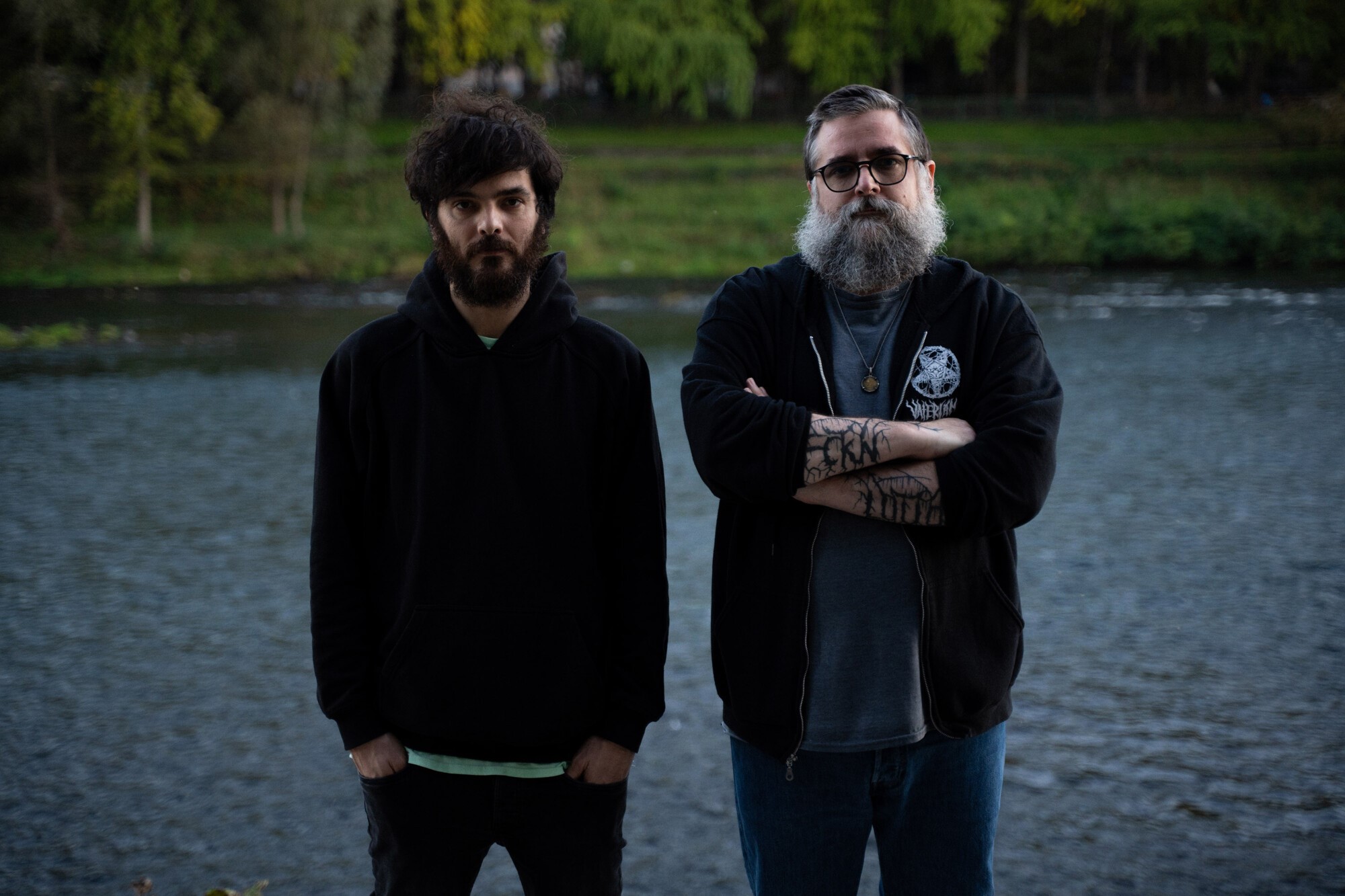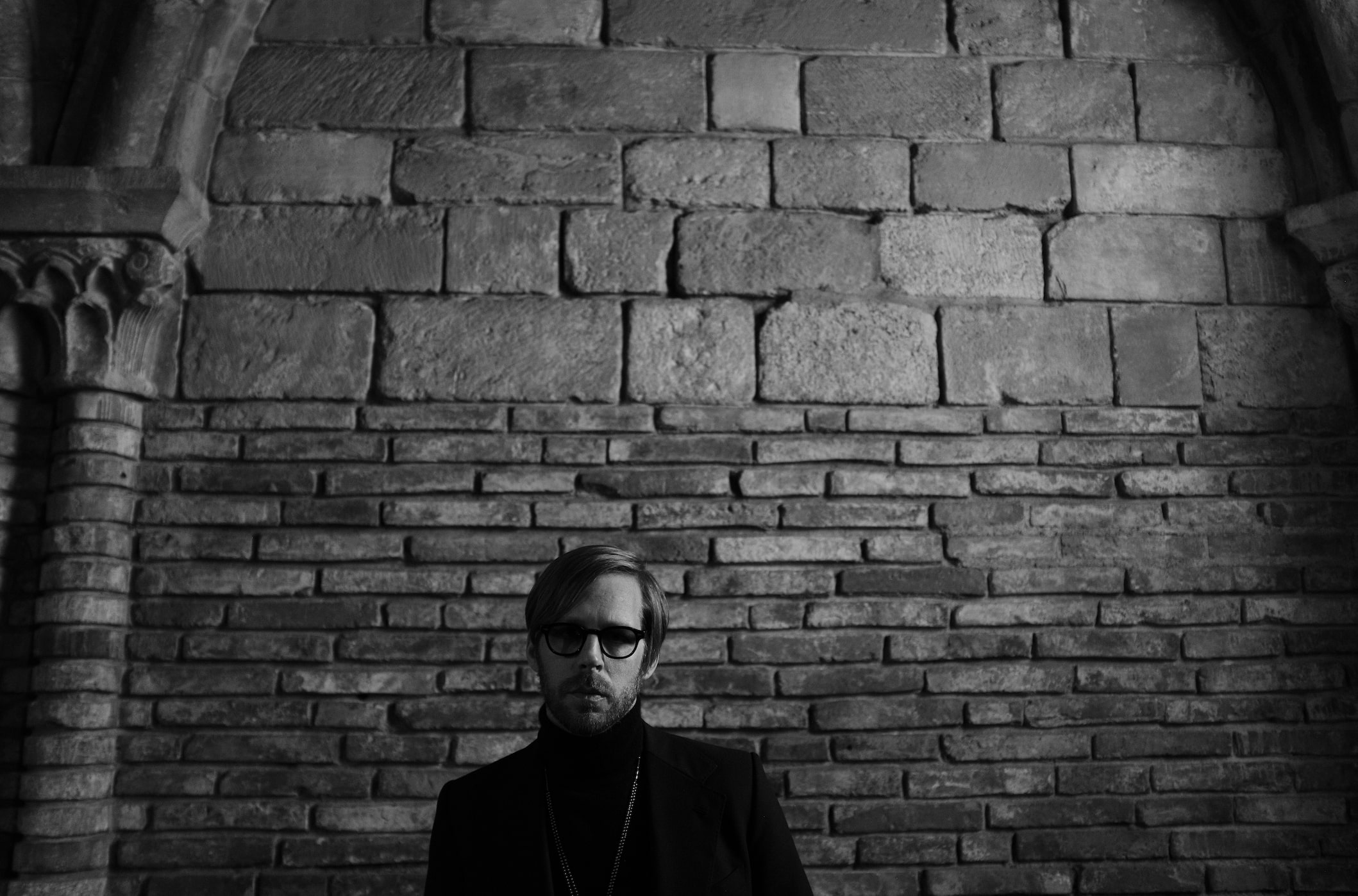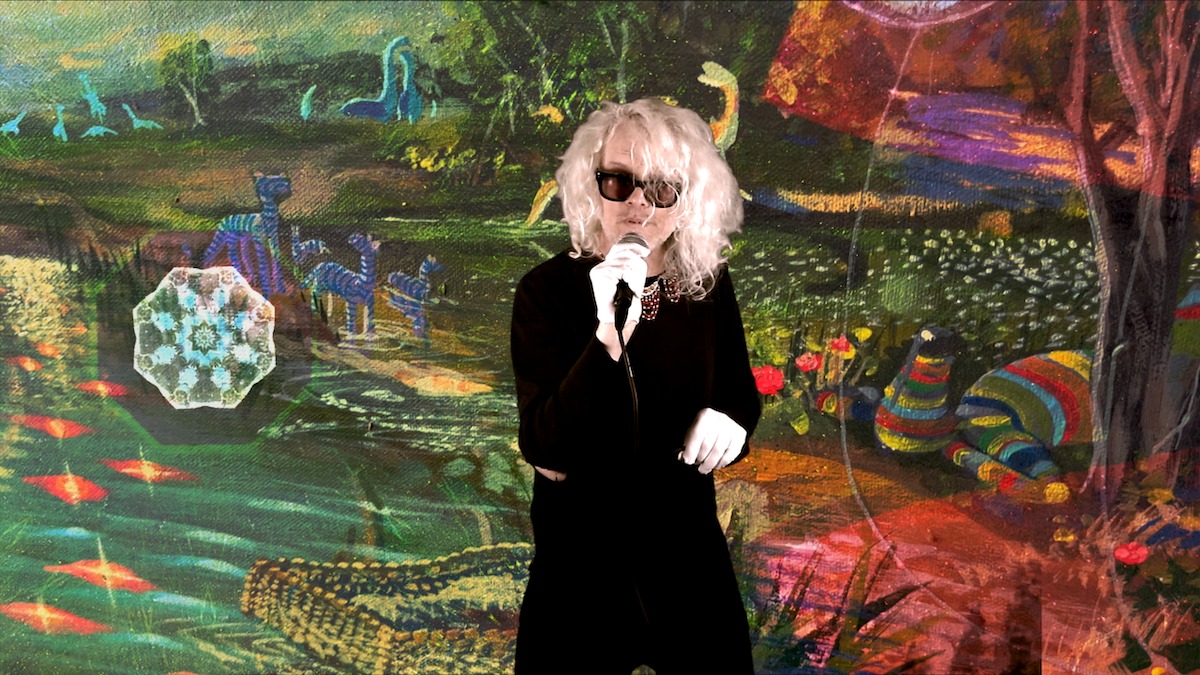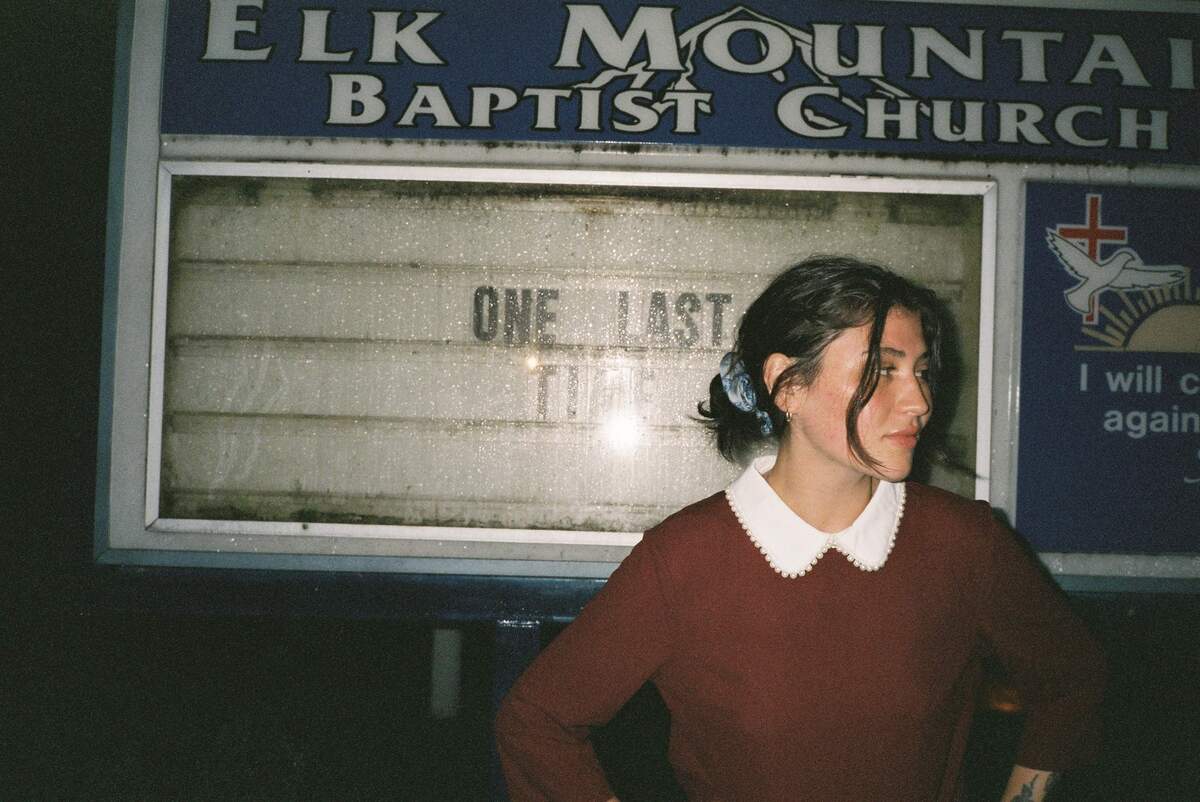Chaos Shrine | Interview |New Album, ‘Mirror Division’
Chaos Shrine, the musical duo of Paul Beauchamp and Andrea Cauduro, explores the concept of duality through intricate sonic rituals.
Their creative process involves seamless role interchange, where they intuitively transition from composer to musician to engineer, driven by silent cues. With backgrounds in ambient/drone music and contemporary guitar work, Beauchamp and Cauduro craft soundscapes that reflect the fluidity and mystique of chaos magick.
Chaos Shrine’s unique approach to music production is based on an almost instinctual communication between Beauchamp and Cauduro. They move effortlessly from composer to musician, then to engineer and producer, without any predefined roles. This fluidity fosters a creative environment where each artist knows when to step in or step back. This interplay continues until a moment of silent understanding is reached, signaling the transition to a new element in the composition or the next piece.
Together, Beauchamp and Cauduro’s music is a blend of evolution and devolution, harmoniously creating soundscapes that captivate listeners. The duality that guides their creative process reflects not only in their music but also in the unique relationship between the two artists, providing a fascinating insight into the dynamics of Chaos Shrine’s artistic journey.
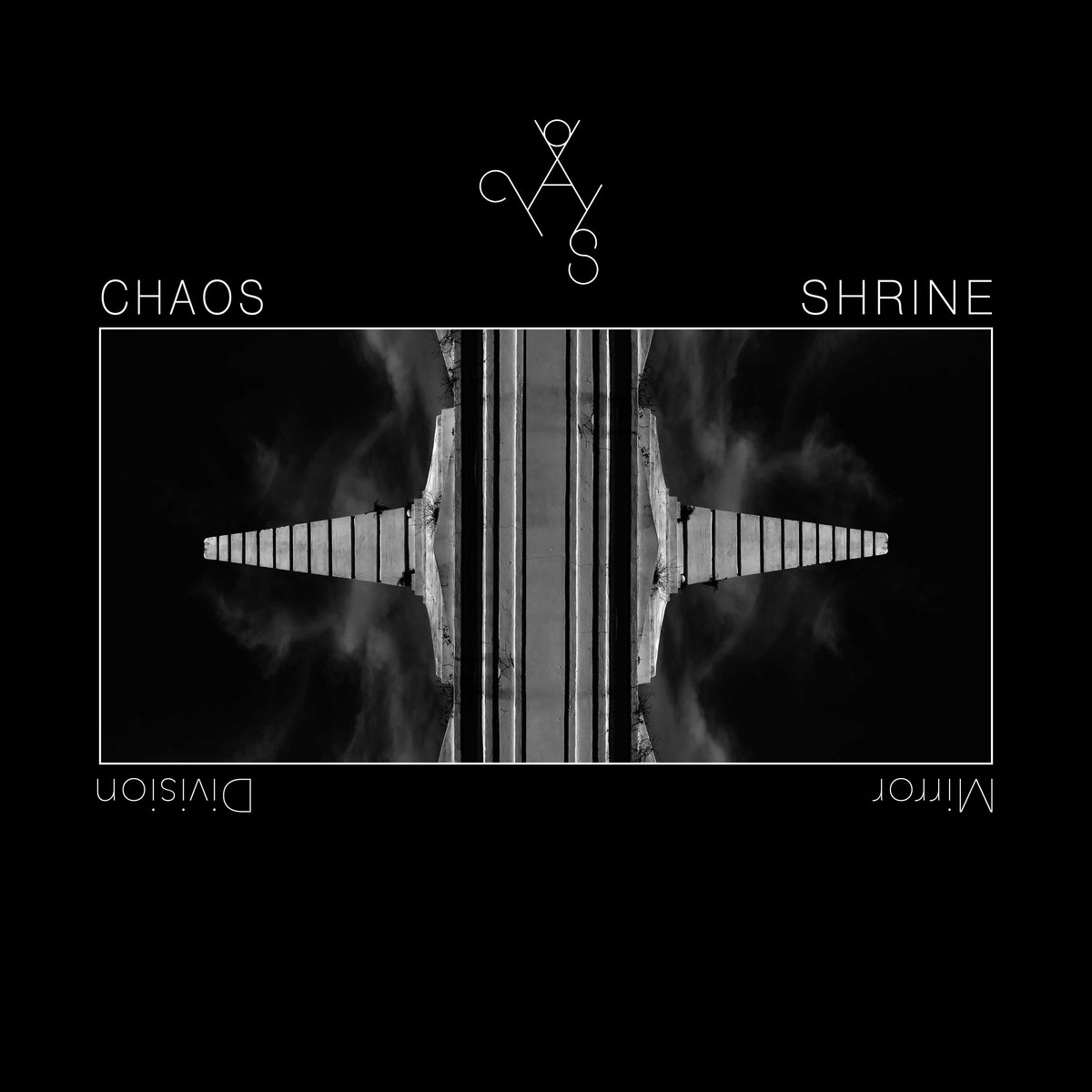
“Duality is at the heart of our production process”
Can you describe how your collaborative process unfolds in the studio? How do you navigate the seamless interchange of roles between composing, performing, engineering, and producing?
Paul Beauchamp: Andrea and I have complementary yet distinct skill sets that mesh well in the studio. Andrea has a background in Composition from the Conservatory of Aquila, while I have over 20 years of experience in sound design and engineering. We both understand how to utilize the studio as a creative tool, so our transitions between roles are fluid and intuitive.
Andrea Cauduro: The interchange of roles comes naturally to us. We’ve worked together in a variety of studio settings, so Chaos Shrine is almost like a culmination of everything we’ve done.
Your music seems to draw from a variety of genres and styles. Could you talk about some of your main inspirations and influences, both musical and otherwise, and how they reflect on your latest album?
Paul: For this project, I drew a lot of inspiration from electronic artists I greatly admire, like Kevin Richard Martin, Scorn, and Justin Broadrick. I was also influenced by genre-bending pioneers from the past, such as Lee Scratch Perry and Adrian Sherwood.
Andrea: Kevin Martin’s (The Bug) dub music, Scorn, obscure ambient styles, and guitar legends like Hendrix and Jeff Beck were significant influences on this album. We aimed to create a sound that captures various elements of dub music, transposed into our world, which leans more towards ambient and obscure tones.
The concept of duality is central to Chaos Shrine. How does this concept manifest in your music, both in terms of sound and in your creative process?
Paul: Duality is at the heart of our production process. One of us might start by improvising a loop on guitar or synth, while the other records and manipulates it to form a theme for a track. This back-and-forth continues, with each of us contributing and switching roles seamlessly. I find this approach highly engaging.
Andrea: As we mentioned earlier, the creative process itself involves constant role-switching between composing, performing, engineering, and producing. This fluidity reflects the concept of duality.
How have your diverse backgrounds shaped the evolution of Chaos Shrine?
Paul: Andrea’s classical composition background brings a unique perspective to the music’s structure, while my experience in audio engineering allows us to shape and sculpt our sound effectively.
Andrea: My more traditional background naturally leads me towards composition, while Paul is a “master of sound,” excelling in the technical aspects. But we share these roles and ideas with each other throughout the process.
Could you tell us more about the making of ‘Mirror Division’? What experimental techniques or instruments do you use, and how do they contribute to the sonic landscape of Chaos Shrine?
Paul: I draw inspiration from Brian Eno’s concept that the studio itself is a creative instrument. My studio has a wide array of analog recording gear, microphones, amplifiers, and synthesizers, both old and new. We like to use this equipment in unconventional ways, often breaking the rules to create unique sounds.
Andrea: We began with short samples created by Paul, which I then reprocessed multiple times before adding improvisational guitar parts. For composition, I used graphic scores, drawing inspiration from 20th-century contemporary classical methods to structure the beats and arrangements.
How have your past collaborations with artists like Lydia Lunch and Mats Gustafsson influenced your approach to music-making within Chaos Shrine?
Paul: Every collaborative experience offers an opportunity to learn and grow. These collaborations are building blocks that shape who you are as an artist.
Andrea: These collaborations have certainly influenced me, but I must say that my work with Paul over the past few years has had the most significant impact on my artistic journey.
What other projects or activities occupy your time outside of Chaos Shrine?
Paul: I’m currently researching new concepts for potential solo compositions. Additionally, I’ve been getting involved in writing music for films and documentaries, an area I’d like to explore further.
Andrea: I primarily work as a musician and composer for theater. My solo projects are on hold at the moment, but I’ve just recorded a new album with Fabrizio Modenese Palumbo as producer. I also collaborate with other musicians, like Paolo Spaccamonti, as a session player.
How does your approach differ when performing live compared to your studio work?
Andrea: When performing live, I can explore a more physical, heavier, and psych-oriented approach.
What do you envision for the future of Chaos Shrine?
Andrea: “Nothing is true, everything is permitted.” We’re always thinking about creating new music and exploring new directions.
Thank you for your time. Any final thoughts you’d like to share with our readers?
Andrea: Thank you for your attention, and enjoy the Chaos!
Klemen Breznikar
Headline photo: Omar Bozenvi
Chaos Shrine Facebook / Instagram / Bandcamp
Erototox Decodings Official Website / Facebook / Instagram / Bandcamp / YouTube
‘Vapula’ by Chaos Shrine | New Album, ‘Mirror Division’

